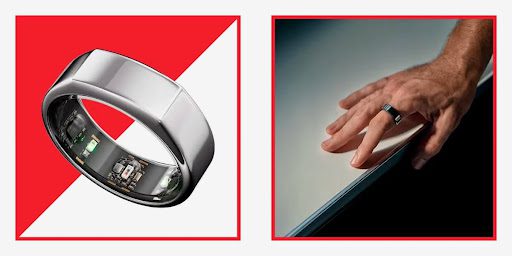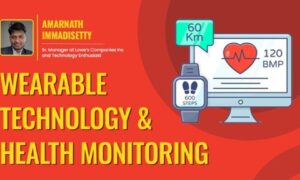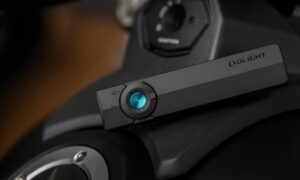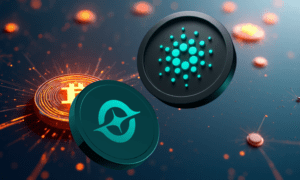In recent years, wearable health technology has evolved from basic fitness trackers to sophisticated medical-grade devices. Among these innovations, the bio sensing ring stands out as one of the most compact and efficient tools for continuous health monitoring. These sleek, smart rings pack powerful sensors into a small, stylish design, offering real-time insights into the user’s physical and physiological health.
Let’s explore what bio sensing rings are, how they work, their benefits, and what the future holds for this growing technology.
What Is a Bio Sensing Ring?
A bio sensing ring is a type of smart wearable device designed to monitor various biological signals from the human body. Unlike traditional wrist-worn fitness bands or smartwatches, this device is worn on the finger, providing a more stable and accurate source of data collection.
These rings use miniaturized sensors to measure parameters such as:
- Heart rate
- Blood oxygen saturation (SpO2)
- Body temperature
- Sleep quality and patterns
- Respiratory rate
- Activity and movement
- Stress levels
- ECG (Electrocardiogram), in some advanced models
How Is It Different from Other Wearables?
The biggest advantage of a bio sensing ring lies in its form factor. The finger is rich in arterial blood flow, making it an ideal location for pulse and temperature measurements. Additionally, because the ring is smaller and lighter, it offers greater comfort and can be worn continuously without inconvenience—even during sleep.
How Does a Smart Health Ring Work?
A smart health ring operates using a combination of optical, electrical, and motion sensors embedded inside the ring’s body. These sensors constantly collect data and transmit it via Bluetooth to a smartphone app, where it is processed, analyzed, and displayed in user-friendly dashboards.
Let’s break down how some of these sensors function:
Optical Sensors (PPG)
Photoplethysmography (PPG) sensors emit green or infrared light into the skin to measure changes in blood volume. This is used to calculate:
- Heart rate
- Blood oxygen levels
- Respiratory rate
Skin Temperature Sensors
Tiny thermistors are used to track minute changes in skin temperature, which can be useful for detecting:
- Fever or early signs of illness
- Menstrual cycle phases
- Sleep disturbances
Accelerometers and Gyroscopes
Motion sensors help determine:
- Sleep stages (REM, deep, light)
- Activity tracking (steps, movement patterns)
- Respiration during sleep
Electrical Sensors (ECG/EKG)
Some high-end models include electrodes for ECG monitoring, which can detect irregular heart rhythms or atrial fibrillation—an important early indicator of cardiac issues.
Health Benefits of Using a Bio Sensing Ring
Bio sensing rings go beyond counting steps or tracking workouts. They serve as round-the-clock wellness monitors, offering a wide array of health benefits:
1. Early Illness Detection
By continuously monitoring temperature, heart rate variability, and oxygen saturation, the ring can help detect early signs of infection or disease—sometimes even before symptoms appear.
2. Better Sleep Management
The ring tracks sleep cycles, disturbances, and duration with high precision. It gives personalized sleep scores and suggestions to improve sleep hygiene, a critical factor in overall well-being.
3. Stress and Recovery Insights
Heart rate variability (HRV) is a key indicator of stress and recovery. The ring uses HRV data to suggest when to rest or engage in physical activity, helping users avoid burnout.
4. Fitness Optimization
Unlike general fitness trackers, a smart health ring analyzes recovery and readiness data, not just daily steps or calorie burn. This allows athletes and fitness enthusiasts to optimize their training schedules.
5. Menstrual and Fertility Tracking
Some smart rings offer features specifically for women’s health, including menstrual cycle predictions, ovulation tracking, and fertility window alerts based on temperature and hormonal changes.
Popular Bio Sensing Ring Brands
Several companies are leading the way in this technology space. Here are a few prominent names:
Oura Ring
One of the most well-known bio sensing rings, Oura Ring focuses on sleep, recovery, and readiness scores. It’s trusted by elite athletes and health professionals alike.
Ultrahuman Ring
A newer entry into the market, this ring integrates glucose tracking (with an additional device) and offers metabolic fitness insights, along with standard features like HRV and sleep monitoring.
Circular Ring
Circular adds a unique twist with customizable alerts, vibration alarms, and mood tracking features. It’s also one of the few rings with an interchangeable outer shell for design flexibility.
Use Cases Across Industries
Beyond personal health, bio sensing rings are being adopted in various fields:
Healthcare and Telemedicine
Doctors and clinics are exploring these rings as remote patient monitoring tools, especially for post-surgery recovery or chronic illness management.
Sports and Athletics
Teams and individual athletes use smart rings to monitor recovery, sleep quality, and overtraining risks. Some have even credited these devices with preventing injuries and optimizing performance.
Workplace Wellness
Corporations are integrating bio sensing technology into employee wellness programs, helping reduce stress and improve productivity.
Privacy and Data Security
With great data comes great responsibility. Since bio sensing rings collect sensitive health information, manufacturers must implement strict privacy protocols, including:
- End-to-end encryption
- Data anonymization
- Compliance with HIPAA and GDPR regulations
Users should always review the privacy policy of the smart ring brand before purchasing.
Future of Smart Health Rings
The future looks promising for smart health ring technology. Here’s what to expect in the coming years:
- Integration with AI for more personalized health insights.
- Non-invasive glucose monitoring for diabetes management.
- Real-time disease prediction algorithms.
- Longer battery life with sustainable charging options.
- Better mental health tracking, using brainwave sensors (still in research phase).
As technology continues to miniaturize and improve, smart rings may soon replace several larger wearables and even traditional medical tools.
Final Thoughts
The bio sensing ring is not just a gadget—it’s a powerful, continuous health companion that fits right on your finger. With its ability to monitor vital signs, sleep patterns, stress levels, and activity, it provides actionable insights that can significantly improve your health and lifestyle.
Whether you’re a fitness enthusiast, a busy professional, or someone managing a chronic health condition, investing in a smart health ring could be a smart move toward a more informed, healthier future.


































